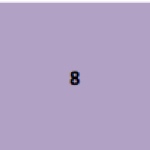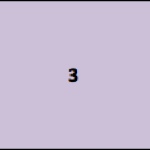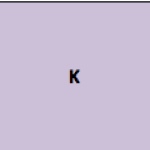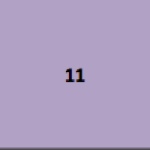Information
-
Audit Title
-
Document No.
-
Client / Site
-
Conducted on
-
Prepared by
-
Location
-
Personnel
Reading Literature
-
Cite textual evidence that supports an analysis of the text.
-
Determine a theme or central idea of the text and analyze its development throughout the text.
-
Analyze how certain dialogue or incidents in a story or drama influence that story.
-
Determine the meaning of words and phrases as they are used in the text and analyze the impact of rhymes and other repititions of sound.
-
Compare and contrast the structure of two or more texts and analyze how the differing structures of each text contributes to its meaning and style.
-
Analyze how differences in points of view of the characters and the audience/reader creates such effects as suspense or humor.
-
Analyze the extent to which a filmed or live production of a story or drama stays faithful or departs from the text or script and evaluate those decisions.
-
Analyze how a modern work of fiction draws on themes, patterns of events, or characters from muths, traditional stories, or religious works.
-
Read and comprehend literature, including stories, dramas, and poems of appropriate complexity
Reading Informational Text
-
Citing the textual evidence that most strongly supports an analysis of what the text says explicitly as well as inferences drawn.
-
Determine a central idea of a text and analyze its relationship to supporting ideas.
-
Analyze in detail the structure of a specific paragraph in a text, including the role of particular sentences in deeloping and refining a key concept.
-
Determine an author's point of view or purpose in a text and analyze how the author acknowledges and responds to conflicting evidence or viewpoints.
-
Evaluate the advantages and disadvantages of using different mediums to present a particular topic or idea.
-
Delineate and evaluate the argument and claims in a text, assessing the reasoning and evidence; recognize when irrelevant evidence is introduced.
-
Analyze a case in which multiple texts provide conflicting information on the same topic and identify where the texts disagree on facts or interpetation.
-
Read and comprehend literary nonfiction at the high ends of the grades 6-8 text complexity band independently and proficiently.
Writing
-
Write arguments to support claims with clear reasons and relevant evidence.
-
Write informative/explanatory texts to examine a topic and convey ideas, concepts, and information through the selection, organization and analysis of relevant content.
-
Write narratives to develop real or imagined experiences or events using effective technique, relevant descriptive details, and well-structured event sequences.
-
use technology, including the internet, to produce and publish writing and present the relationship between information and ideas efficiently
-
Develop and strengthen writing as needed by planning, revising, editing, rewriting, or trying a new approach, focusing on how well purpose and audience have been addressed.
-
Produce clear and coherent writing in which development and organization are appropriate to task, purpose, and audience.
-
Conduct short research projects to answer a question, drawing on several sources and generating additional related, focused questions that allow for exploration.
-
Gather relevant information from multiple print and digital sources, using search terms effectively; assess the credibility and accuracy of each source; and quote or paraphrase the data and conclusions of others while avoiding plagiarism and following a standard format for citation.
-
Draw evidence from literaru or informational texts to support analysis, reflection, and research.
-
Write routinely over extended time frames and shorter time frames for a range of discipline-specifics tasks, purposes, and audiences
Speaking and Listening
-
Engage effectively in a range of group discussions with diverse partners on grade 8 topics, texts, and issues, building on others' ideas and expressing their own clearly.
-
Analyze the purpose of information presented in diverse media and formats and evaluate the motives behind its presentation.
-
Delieate a speaker's argument and specific claims, evaluating the reasoning and relevance and evidence and identifying when irrelevant evidence is introduced.
-
Present claims and findings, emphasizing salient points in a focused, coherent manner with relevant evidence, sound reasoning, details; use appropriate eye contact, adequate volume, and clear pronuciation.
-
Integrate multimedia and visual displays into presentations to clarify information, strengthen claims and evidence, and add interest.
-
Adapt speech to a variety of contexts and tasks, demonstrating command of formal English when indicated or appropriate.
Language Standards
-
Demonstrate command fo English grammar and usage.
-
Demonstrate command of English capitalization, punctuation, and spelling.
-
Clarify the meaning of unkown multiple-meaning words and phrases at an 8th grade level.
-
Demonstrate understanding of figurative language, word relationships, and nuances in word meanings.
-
Acquire and use grade-appropriate academic and domain-specific words and phrases.
-
Use knowledge of language and its conventions when writing, speaking, reading, or listening.










